 The other day a young girl asked me, "Are you the lady that writes the flower column in the paper"? I was thrilled to know that my readership includes middle schoolers. Our conversation soon turned to vegetables. Which are good to plant at this time of year and how late can they be started. Gardening can be a wonderful learning opportunity for all of us but especially for children.
The other day a young girl asked me, "Are you the lady that writes the flower column in the paper"? I was thrilled to know that my readership includes middle schoolers. Our conversation soon turned to vegetables. Which are good to plant at this time of year and how late can they be started. Gardening can be a wonderful learning opportunity for all of us but especially for children.
In a garden, children can breathe fresh air, discover bugs and watch things grow. And, of course, a garden offers kids and everyone else fresh, tasty homegrown food. What better place for kids to play than in a place where they can use their hands and connect with the earth? Where else can they make a plan for a plot of land and learn the lessons of hope and wonder, suspense and patience and even success and failure? In a garden you can have conversations about life and even death in a way that doesn't seem so sad.
With the school year just starting, now would be the perfect time to encourage your child to grow something, keeping track of the progress by pictures and notes. Their daily actions really can make a difference for a sustainable future. Maybe what they learn could even be used for a school project. Here are some ideas.
September is the perfect time to start cool season vegetables. Carrots are fun to start from seed as they can be harvested even when small. For flavor it's difficult to beat a Nantes. Nantes Coreless or Little Finger are two popular varieties. They're not a carrot you'll find in the grocery store because they're difficult to harvest commercially and don't store well. Both are juicy and sweet. Nantes coreless grows to 6-7 " long, is blunt-tipped and fine grained. Little Finger is unmatched for snacks, pickling or steaming. It grows to just 3-4" long and is ideal for container gardening. too.
Red Cored Chantenay has broad shoulders and strong tapered tips. This wedge-shaped carrot is also rarely grown by commercial growers. For the home garden it produces 6" long carrots that keep well when left in the soil, store well after digging and are sweet and crunchy. They perform well in heavy soil, too.
Danvers Half Long are another variety that are tasty raw, cooked, or juiced. They are one of the best carrots for storage as they stay crisp. Carrots found at the super market are usually Imperators just so you know.
You can still start peas, beets, spinach, arugula, mustard and radish now from seed but it's better to start other veggies like lettuce, chard, broccoli, cabbage, cauliflower, kale, onions, leeks and brussels sprouts from starts. If your veggies haven't gotten a good start before the soil cools, they'll just sit there until spring. Remember to rotate your crop locations so insects and diseases don't cause problems. Also be sure to amend your soil with compost to replenish the nutrients that have been used by your summer veggies and flowers.
Flowers in winter are always welcome so I like to plant early blooming types of sweet peas at this time of year. These varieties flower in the shorter days of late winter. Winter Elegance and Early Multiflora are common early flowering types. Also plant some of the more fragrant spring flowering heirlooms and Spencer's at the same time to extend your harvest time. My very favorite sweet pea with long stems for cutting and an intense fragrance is called April in Paris. Large ruffled blossoms are a soft primrose cream, tinted at the edges in dark lilac that deepens and increases with age. You can't go wrong no matter what color or style sweet pea you choose. They are all beautiful.
If you grow roses fertilize now to encourage another round of blooms. A well-fed rose not only rewards you with beauty and fragrance but can stay healthy and resist attack from insects and diseases. Roses grown in sandy soil or containers need more frequent feeding than those grown in loam or heavier soil. Make sure the soils is moist before fertilizing and water well afterward.
Whatever you grow, include the kids in the garden. It's a free and fun activity.

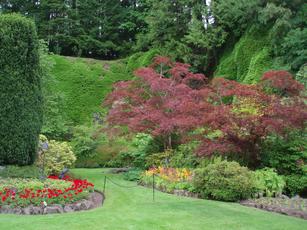
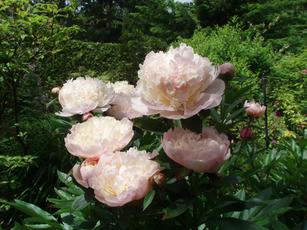
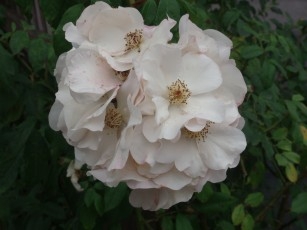
 The weather this year has agreed with my roses. It may seem like we’re living in England lately, but the roses have appreciated the cool, moist spring- all the better to set lots of buds without a sudden heat wave to ruin the show. Every rose lover I’ve talked to is raving about the quality, quantity and extended bloom time for their roses.
The weather this year has agreed with my roses. It may seem like we’re living in England lately, but the roses have appreciated the cool, moist spring- all the better to set lots of buds without a sudden heat wave to ruin the show. Every rose lover I’ve talked to is raving about the quality, quantity and extended bloom time for their roses. 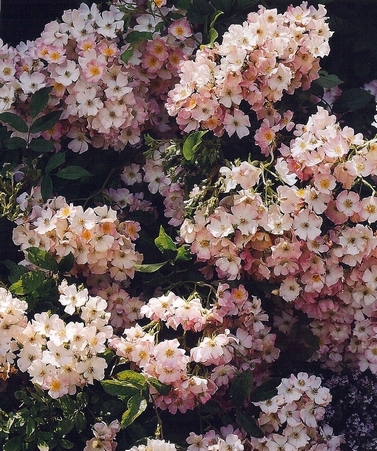 s and smother overwintering eggs and insects by spraying with horticultural oil. Combine your spray with lime-sulfur ( except on apricot trees ) to kill fungal disease spores like the ones that cause peach-leaf curl. has also been shown to supress fungal diseases.You’ll want to do this again when the buds swell but before they open ( about Valentine’s Day )
s and smother overwintering eggs and insects by spraying with horticultural oil. Combine your spray with lime-sulfur ( except on apricot trees ) to kill fungal disease spores like the ones that cause peach-leaf curl. has also been shown to supress fungal diseases.You’ll want to do this again when the buds swell but before they open ( about Valentine’s Day ) 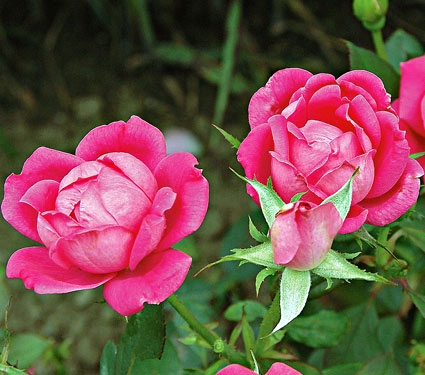 to produce lots of roses not just a few exhibition size so I prune shrubs moderately. Remember your goal is to keep the center of the plant open for good air circulation. Aim for a vase-shaped bush with an open center by cutting out crossing canes, spindly, weak, broken or diseased stems as well as dead wood. Cut back the remaining stems by about one-third, cutting canes at a 45-degree angle, just above an outward facing bud. Don’t worry whether you’re pruning job is perfect. Roses are super forgiving and you can trim them up again later. I once helped prune the rose garden at historic Gamble Gardens in Palo Alto. To revitalize the old shrubs we sawed out most of the beefy canes. I didn’t think they could recover in time for the big May bloom but they did and were spectacular. Roses are like redwoods,-you can’t kill one-they’re the energizer bunnies of the plant world.
to produce lots of roses not just a few exhibition size so I prune shrubs moderately. Remember your goal is to keep the center of the plant open for good air circulation. Aim for a vase-shaped bush with an open center by cutting out crossing canes, spindly, weak, broken or diseased stems as well as dead wood. Cut back the remaining stems by about one-third, cutting canes at a 45-degree angle, just above an outward facing bud. Don’t worry whether you’re pruning job is perfect. Roses are super forgiving and you can trim them up again later. I once helped prune the rose garden at historic Gamble Gardens in Palo Alto. To revitalize the old shrubs we sawed out most of the beefy canes. I didn’t think they could recover in time for the big May bloom but they did and were spectacular. Roses are like redwoods,-you can’t kill one-they’re the energizer bunnies of the plant world.